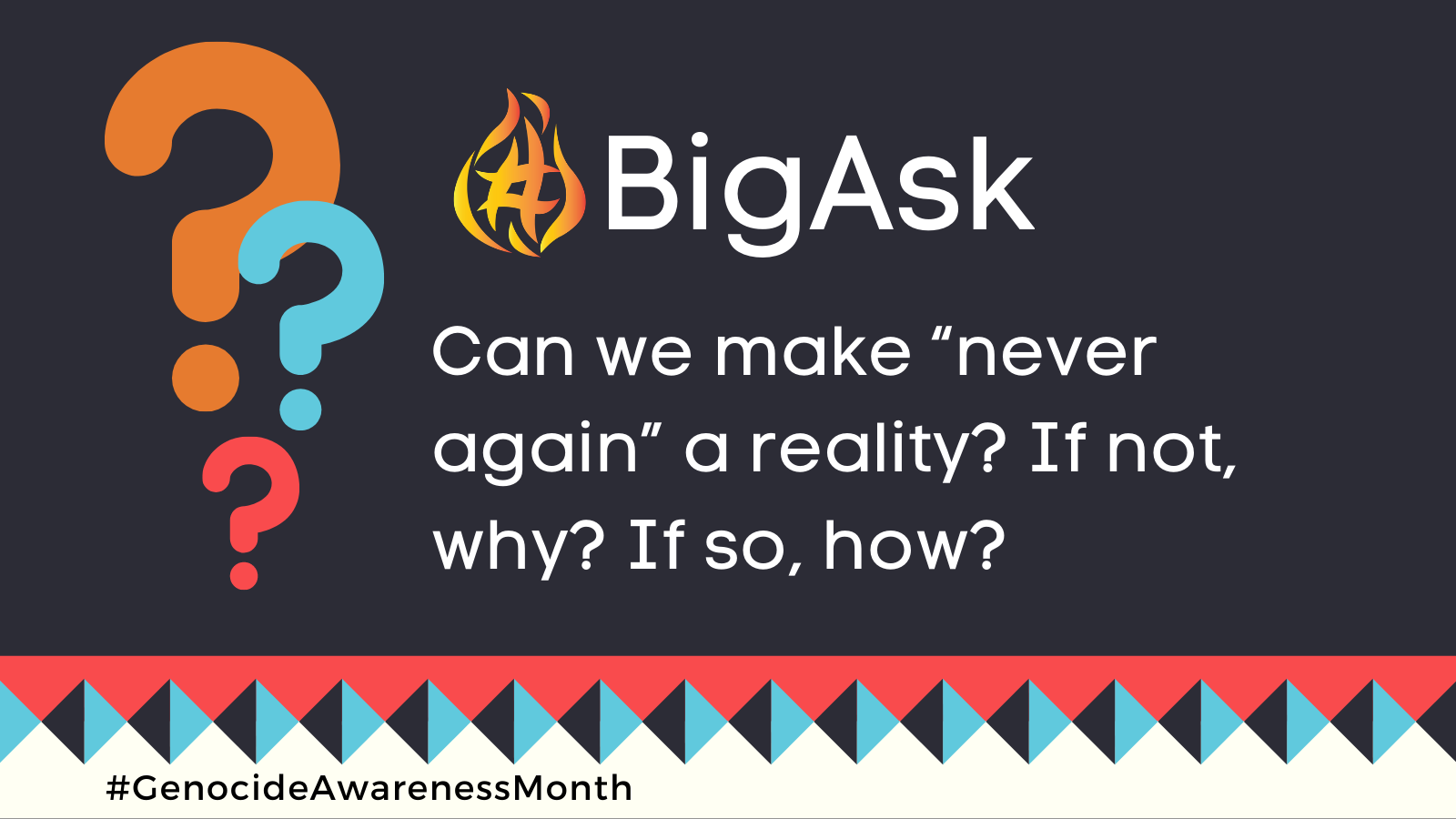What can the Armenian Genocide teach us about how the world has looked at the promise of “Never Again” thus far?
By Dr. Harold Takooshian, Professor of Psychology and Urban Studies at Fordham University
I double-thank Together We Remember (TWR) for its hosting of Genocide Awareness Month, and inviting me to partake in this tocsin—to address the question, “Can we make ‘Never again’ a reality?” I offer this two-part answer as (1) a person of Armenian ancestry, and (2) a psychological scientist.
1. Armenians are a small and ancient people whose homeland for 3,000 years has been the Caucasus Mountains, where the Bible described the landing of Noah’s Ark on Mount Ararat. [See Note 1 below. **] In their long history, Armenians have survived several deadly onslaughts by far larger groups--from Hittites, Assyrians, and Persians to Romans, Mongols, and Turks. Starting on the night of April 24, 1915, over one million Armenian Christians (half the nation) were systematically killed by Turkish authorities in 1915-1923. Each April 24, Armenians world-wide mark “Martyrs Day.”
The term “Genocide” did not exist until Polish law student Raphael Lemkin coined it in 1944, to describe the Nazi effort to exterminate Poles. Of course this monstrous crime-with-no-name describes most of human history, as some groups exterminated others. On August 22, 1939, when Hitler’s generals were surprised to receive his brutal orders to exterminate the Polish nation, he reportedly chastised them: “Who talks nowadays of the annihilation of the Armenians?” [2] It is clear that the modern Holocaust was encouraged by the world’s silence during prior genocides.
2. Psychological Science. I was fortunate to study with legendary social psychologist Stanley Milgram (1933-1984), who wondered how modern genocides of Armenians and Jews were possible. Milgram’s lab documented our surprisingly strong human tendencies for obedience to authority and conformity to peers. He found repeatedly that invisible social forces caused good people to do evil things—to the point of electrocuting an unwilling stranger strapped into a chair in a Yale laboratory. He concluded that these tendencies “give our species only a modest chance for survival.”
In all his work, Milgram was very sensitive to what he called the “social fabric” that binds strangers. If Milgram were alive in 2021, what would he see in the USA and globally? The answer: a highly polarized society where tension fills the air, strangers distrust one another, random violence goes unchecked, our core institutions seem out of control. We see ourselves as decent people who seek to “overcome evil with good” (Romans 12:21), yet we also see many of our leaders use creative language to “call evil good, and good evil” (Isaiah 5:20). For one example, there is clear evidence today of forced labor and genocide of millions of unseen Muslim Uighurs in remote Northwest China, yet so many of our U.S. corporations and consumers tacitly support this by buying these popular brands produced by slave labor.
As TWR notes, it is important to resolve “Never again” to genocide—and not overlook our natural human tendencies to conform or obey larger social forces that shape how we think and act.
Dr. Harold Takooshian is an American academic and psychologist of Armenian descent, perhaps best known as an expert on the Kitty Genovese case, having spent many years studying the subject and the role that the "bystander effect" played therein. He is a professor of Psychology and Urban Studies at Fordham University.
Banner Image Source: https://www.ft.com/content/56d61e36-e28d-11e4-aa1d-00144feab7de
References:
1. Armenians: www.everyculture.com/multi/A-Br/Armenian-Americans.html
3. Milgram: https://en.wikipedia.org/wiki/Stanley_Milgram


